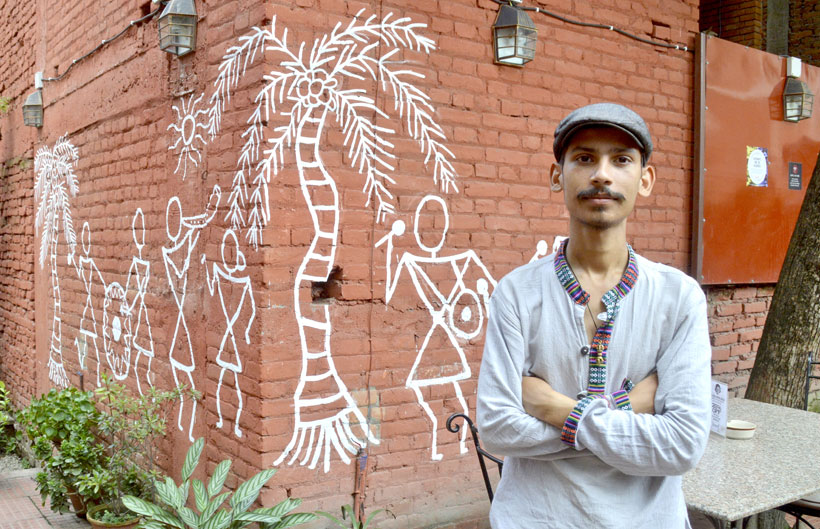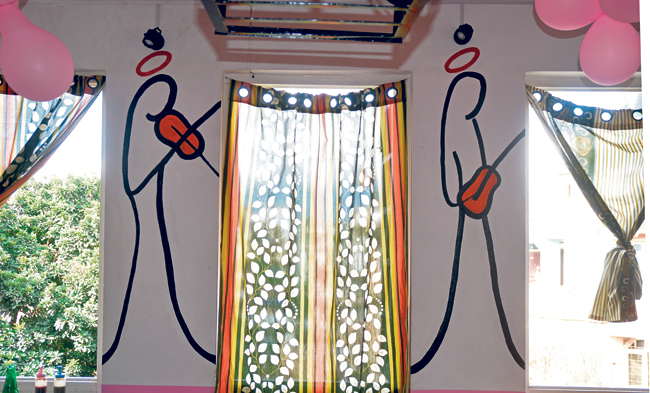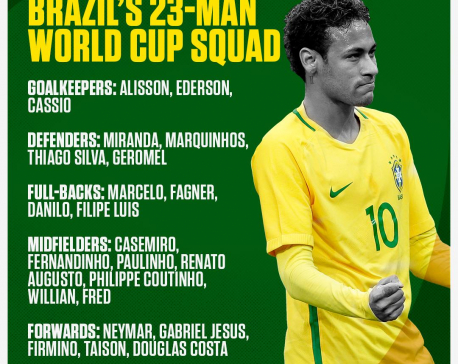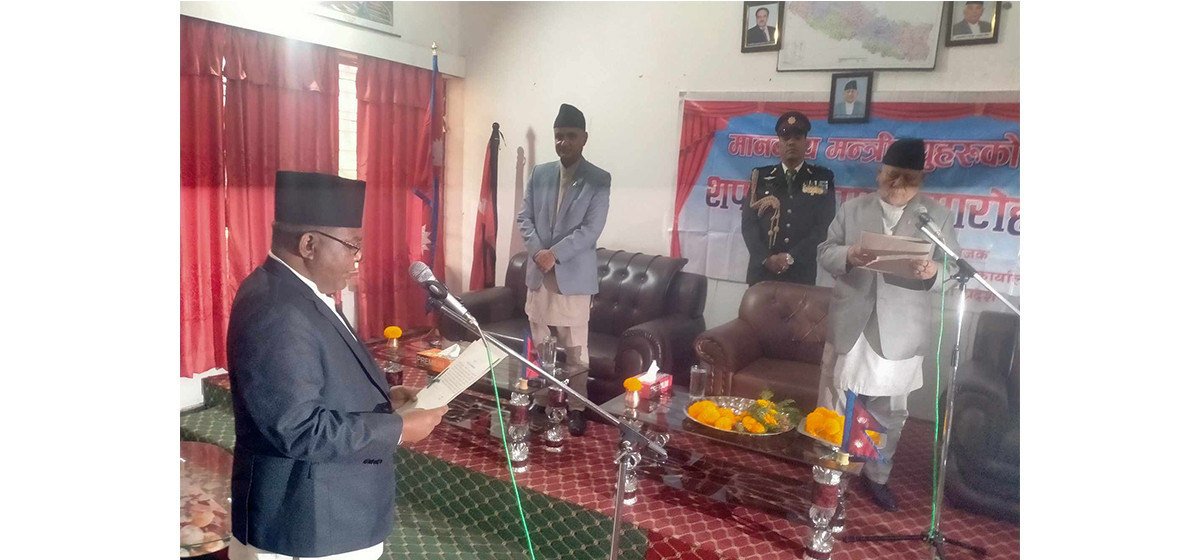
OR

Bimal Bolakhe, an artist from Rautahat, came to Kathmandu at the age of 18. Bolakhe lost his father when he was six years old and had worked as a houseboy trading work for food and education. He couldn’t pursue his passion then but he thought coming to Kathmandu would change things. He somehow got himself enrolled in Srijana Fine Arts College. Now, in his free time, he loves reading historical books, mainly Roman and Greek and hangs around Basantapur and Patan Durbar Square doing different types of art. He spoke to The Week’s Joshna Karki about what art means to him.
What is art to you?
I always wear Nepali hemp clothes, a newsboy cap and have a Bajra pinned on my shirt. This reflects my personality. Art for me is personality. It’s the beliefs and values which are reflected in your behavior. My art is my Bodh. It does not have any form. It is everywhere.
Why is art your ‘Bodh’?
My art is formless yet it is distinct. It is named as Bodhi, the last stage of enlightenment. The art symbol of Bodhi arts is inspired from the meditation position of Buddha. It is my Bodh as it came to my mind at a five days meditation camp. It made me realize that art is beautiful in its simplicity and can signify so much from its symbols.
How do you define your art style?
Artists don’t consider my work as art because I’m not controlled by tools as composition, color, mixing and light. I’m interested only in expressing basic human emotions: tragedy, ecstasy, doom, and so on. For me, art is expressing my passion through symbols and understanding that it is a form of communication that touches others. Kids are just so free and nonjudgmental in their expressions and interpretations. Sometimes, I want to be a kid again just so that I can work without hesitation. This is simplicity for me. My art style is my simplicity.
Who and what is your source of inspiration?
My source of inspiration is the divinity in humanity and nature. A person who has played a major role in my life would be Ujjwal Thapa and all the sisters of Bibeksheel who became my biggest motivators and gifted me with my very first art equipment.
What are your dreams and aspirations?
I want to learn the current art styles and techniques to overcome my flaws and be able to present myself as a certified artist whose works are acknowledged. I want to establish my art in its simplicity. I want Bodhi arts to provide people the freedom of expression. I want Bodhi arts to be a form of art where people can feel free to contribute their creativity as well as be able to relate with other works.
What is the one thing about you that no one knows?
Whenever I have to draw or paint something, a certain music blending with the concept has to be played really loud. I paint and draw to the waves of music in its rise and fall.
Tell us something about your campaign.
Like I said, I want to establish myself as a certified artist. However, I don’t have the financial resources to achieve it. The admission fee for my first year at Srijana Art College has been partly covered and I wish to continue my second year too. I have started a campaign called ‘Help me Pay my Tuition Fee’ through the website generosity.com. Now, people commission me to decorate the walls of their businesses and homes and I’m hoping to earn enough to pay for my education to become a better artist.
 He states that the art signifies, ‘Soch’. That, everything begins from thought. He chose to become an artist because of his thought to become an artist. Everything that people do to become something starts from their choice of thought.
He states that the art signifies, ‘Soch’. That, everything begins from thought. He chose to become an artist because of his thought to become an artist. Everything that people do to become something starts from their choice of thought.
 This art signifies ‘Khoj’, search for knowledge of the thought. He is searching for the tools, techniques and resources of knowledge that would make him a certified artist and would establish his art as Bodhi arts.
This art signifies ‘Khoj’, search for knowledge of the thought. He is searching for the tools, techniques and resources of knowledge that would make him a certified artist and would establish his art as Bodhi arts.
 The art with wings signifies, ‘Moj’. He shares that after the quest for search has been fulfilled, he will get to experience the freedom and happiness it will bring forth.
The art with wings signifies, ‘Moj’. He shares that after the quest for search has been fulfilled, he will get to experience the freedom and happiness it will bring forth.

The last chain of art signifies, ‘Sunyata’. He says that everything that has a beginning has an end. In its fulfillment, it would melt to nothingness and a new thought would emerge.

The art Musicians of Heaven painted on the walls of Rainbow Restaurant symbolizes that all human beings have an invisible power with them capable to create music of any form.
Warli art featured on the walls of Tasneem Kings Kitchen is a beautiful folk art of Maharashtra. It depicts a pictorial life of human beings and animals involved in the process of social functioning. The pattern has a loose rhythm and the above picture illustrates the involvement of human stick figures in the activity of merry-making (Artist’s Photo).
Bolakhe’s works can be seen on the walls of Tasneem’s Kings Kitchen, Jhamsikhel, Bodhi Books and Bakes, Chappalkarkhana, and Rainbow Restaurant, Balkhu.
You May Like This

Brazil 23-man World Cup squad: Neymar joined by strong Man City contingent
As ever, Brazil will be considered one of the favourites for the World Cup this summer, and coach Tite has... Read More...

Man City close in on title, Man United and Liverpool win
LONDON, April 1: Manchester City need just one more win to secure the Premier League title after a blistering first-half display... Read More...

Man behind the fire motorbikes
KATHMANDU: Currently we have 10 fire motorbikes on stand-by at the Juddha Barun Yantra Office in New Road. But, do... Read More...







Just In
- Karnali: Maoist Center’s Pariyar appointed as minister without portfolio
- Illam by-election: Nepal-India border to be 'sealed' from midnight today
- Gold price rises by Rs 500 per tola
- Emir of Qatar returns home after wrapping up state visit to Nepal
- Senate passes bill forcing TikTok’s parent company to sell or face ban, sends to Biden for signature
- PM Dahal hosts luncheon in honor of Qatari Emir
- Tata Sumo accident in Kavre leaves 10 injured, three in critical condition
- West Indies ‘A’ cricket team arrives in Nepal



_20240423174443.jpg)








Leave A Comment